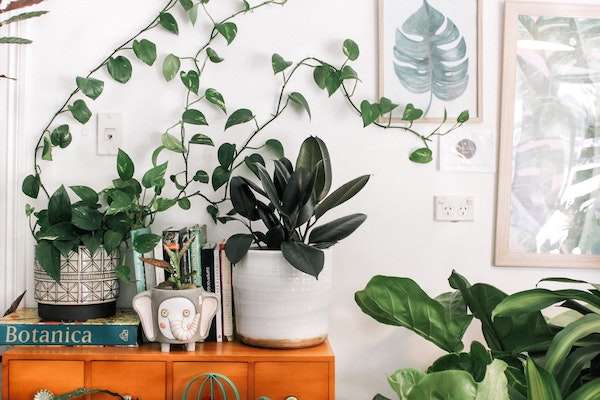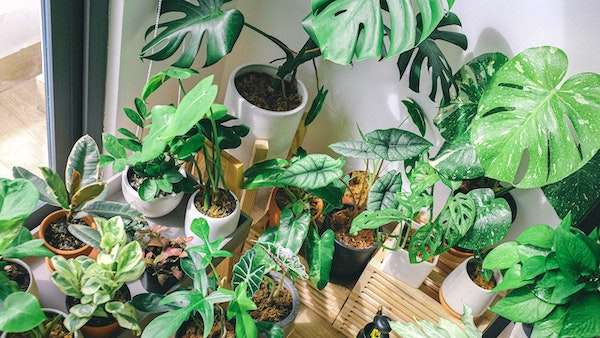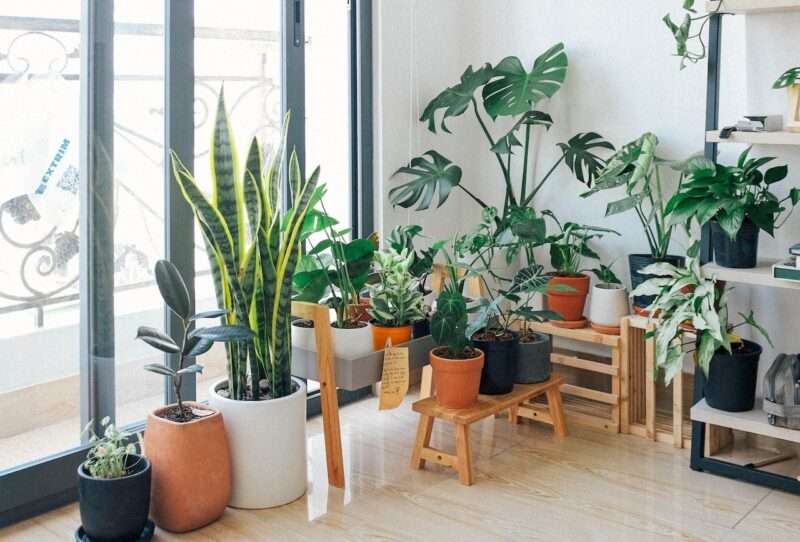Winter’s just around the corner, and you’ve probably already started preparing for it. You shouldn’t forget about your outdoor plants between standard home maintenance and buying Christmas presents. Some of them can survive the winter outside, but that’s not always the case. Keeping your garden pretty is very rewarding and can bring you a lot of happiness and joy. This is why experts suggest moving some of your plants indoors during the colder days. To make this easier, we’ve put together a list of tips for bringing your plants inside for the winter.
Don’t skip the grooming
Before bringing your plants inside for the winter, you should ensure they look their best. You can start by trimming off any dead or unhealthy parts, as you don’t need them stealing the nutrients from the rest of the plant. Once they’re inside, you can clean their leaves to unveil their true beauty. You can also remove any leggy growth to keep your plant looking fresh. Taking all of these steps is crucial as it is the way to keep insects and pests away.
Check if they need repotting
Repotting your plants is necessary every once in a while because they keep growing and spreading. However, repotting can be hard on plants, and they usually need some time to adjust. This is why you should consider whether it is absolutely required or can wait until spring. Generally speaking, if your plants have seriously outgrown their current pot, you should repot before winter. Also, if anything is growing in the ground, it needs to be put into a pot as well. In any other situation, it is best to put off repotting and do it once it gets warmer and your plants are back outside.

Be mindful of the temperature
Even though there are plants that can get through almost any weather circumstances, most of them are sensitive to the cold. However, it is often unclear what exact moment you should bring your plants inside. You can use an outdoor thermometer to keep track of temperature during both night and day. A good rule of thumb is to bring your plants inside when the night temperature drops down to around 50 degrees. When that happens, moving them indoors is the best course of action. This can prevent them from getting too cold, which can be very harmful, and even cause them to die, which is something you definitely want to avoid.
Give them enough time to adapt
Just like you would need time to adapt to a new environment, your plants do as well. If you take them inside straight away, they can have difficulty acclimating, which can weaken them. A way around this is to stretch the process over a few weeks. If you have the option to do so, you can start moving them to the shade for a couple of hours a day. Also, gradually decrease the amount of water and fertilizer you put into the soil. This will make the transition smoother, and your plants will be very thankful for it.

Leave the pests outside
If there’s one thing that you want to keep outside of your home at all costs, it’s the insects. Those nasty pests also like to be warm during winter and can cause severe problems for your plants. Plus, getting rid of them is a nightmare once they’re inside, as they can spread very quickly. Before you start your temporary indoor garden, check your plants for any mites or insects. That way, you can get appropriate pest treatment before bringing your plants inside for the winter.
Adjust the nutrients
Like many other living beings, your plants will go into hibernation mode during the winter. They will grow slower or even stop growing at all. This is why they don’t need the same amount of nutrients in the winter as they do in the warmer part of the year. By overfertilizing your plants, you’re likely to do them more harm than good. You can avoid this by diluting fertilizer to at least 50% of its usual strength. Even better, if your plants seem relatively healthy, hold the fertilizer until the spring.
The same thing applies to water. Overwatering is generally bad, as it can affect growth and can cause mold and bacteria to spread. Your plants don’t need nearly as much water during winter as they do in the summer. You should water them just enough to keep the soil from drying out, but apart from that, they should be just fine.

Consider the plant’s needs
Outdoor plants are generally more resistant and can adapt to numerous circumstances. Still, if they’re introduced to an environment completely opposite to their usual, they are likely to suffer. To ensure your home is entirely plant-friendly, you need to consider what the plants need. Go through your house and think about which areas receive more or less sunlight. See how the inside temperature varies throughout your home and which areas are prone to draft. These characteristics are crucial in deciding what plant to put where and whether to bring it in at all.
If you’re willing to go the extra mile, you can make minor adjustments to your home. Getting a humidifier can be a great way to ensure an appropriate amount of humidity indoors, and it won’t break the bank. You can also get digital thermostats to control the temperature in the areas where plants are. These are not very big changes, but they can significantly improve the quality of life of our plants.
Conclusion
Taking care of the garden is an all-year-round job. To be good at it, you need to learn to recognize what your plants need and what’s the best way you can provide them. Bringing your plants inside for the winter is often required for them to thrive throughout the rest of the year. Doing this will save them from freezing, rotting, and other kinds of damage. When spring comes around, your plants will look their best and be completely ready to continue their life in the garden.

Contributing author Catherine Rodgers works as a writer and agent for heavenlymove.com. She’s been passionate about plants and gardening for quite a while and doesn’t skip any chances to share her knowledge.
Pictures used:
Potted green plants
Plants sitting on a cabinet
Several green leaf plants
Three succulent plants
